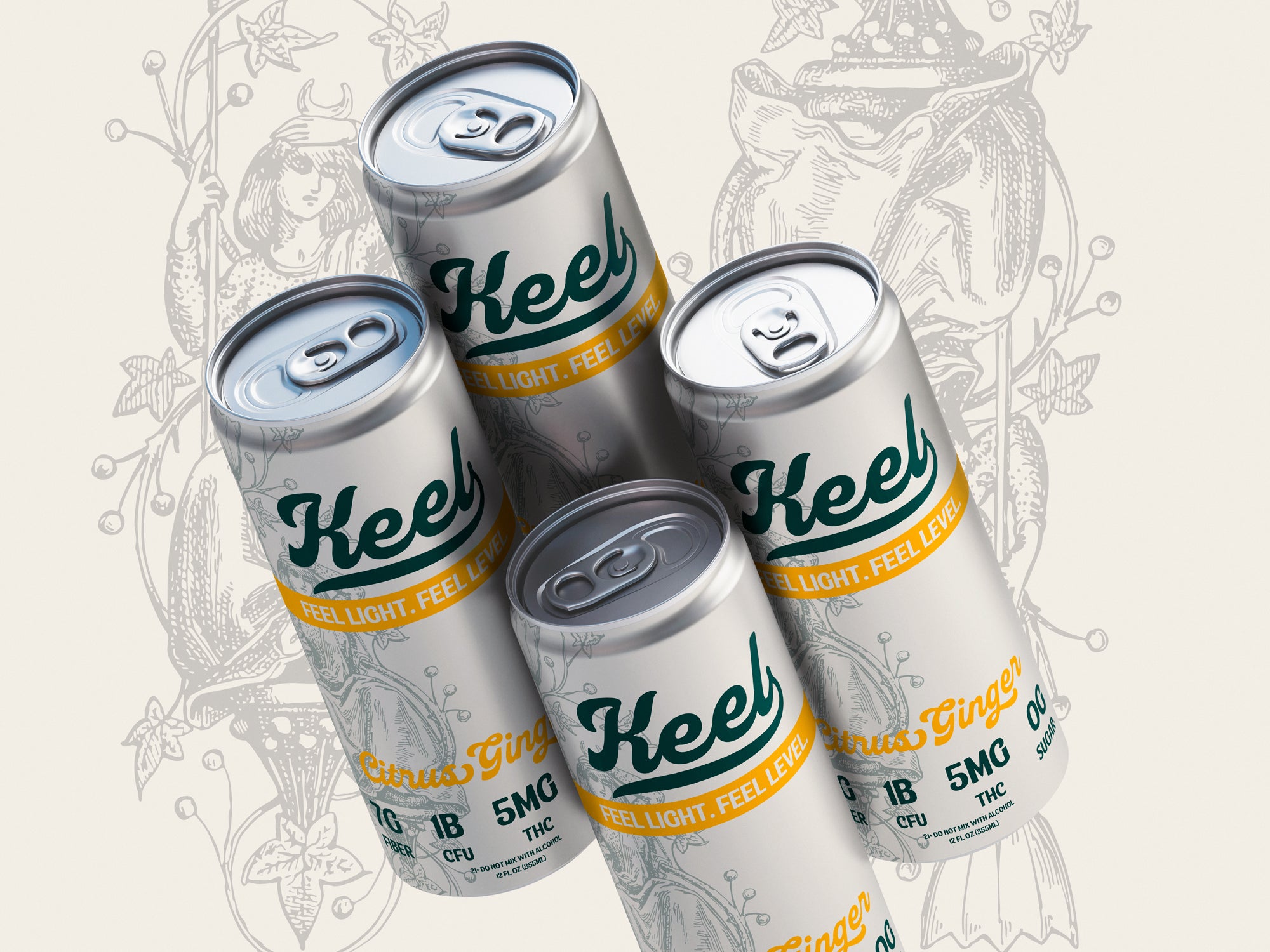TL;DR
CFU at end of shelf life = actual live bacteria when you drink it. Day-one CFU numbers are meaningless if bacteria die during storage. Brands that guarantee CFU at expiration (not just manufacture) overfill their formulas to account for natural die-off. Always check for "guaranteed through expiration" or "viable at end of shelf life" on labels—and ask for COAs (Certificates of Analysis) to verify.
CFU (colony-forming units) measures the number of live, viable bacteria in a probiotic product. A meaningful CFU count is one guaranteed at the end of shelf life—the expiration date printed on the can—not just at manufacture. Bacteria die over time due to heat, oxygen, moisture, and pH changes during storage and shipping. Brands that claim "1 billion CFU" without specifying when that count applies may deliver far fewer live bacteria by the time you drink it. Look for products that state "1 billion CFU guaranteed through expiration" and publish third-party Certificates of Analysis (COAs) showing batch-tested CFU stability over 12–18 months.
CFU in Plain English
CFU stands for colony-forming units. One CFU equals one bacterial cell capable of reproducing and forming a visible colony when cultured on a lab plate. If a probiotic drink contains 1 billion CFU, that means 1,000,000,000 individual bacteria cells are alive and able to divide when you consume the product.
The term "colony-forming" is key. Dead bacteria don't form colonies—they can't reproduce. A product could contain billions of bacterial cells, but if they're dead, the CFU count is zero. This is why CFU measures viability (alive and functional) rather than just presence. Heat-killed or freeze-dried bacteria that never reactivate don't count as CFU, even though they're technically "in" the product.
CFU counts are determined through microbiological plating. Labs take a sample of the product, dilute it, spread it on nutrient agar, and incubate it at body temperature (37°C) for 24–48 hours. They then count the visible colonies and calculate backward to determine CFU per milliliter or per serving. This process is the gold standard for verifying probiotic potency, which is why reputable brands publish COAs showing these test results for every production batch.
Why Counts Change Over Time
Probiotic bacteria are living organisms, and like all living things, they die when exposed to hostile conditions. Four factors kill bacteria during storage: heat, oxygen, moisture, and pH.
Heat: High temperatures accelerate bacterial die-off. Non-spore strains (Lactobacillus, Bifidobacterium) start dying at temperatures above 25°C (77°F). A probiotic drink shipped in summer heat or stored in a warm warehouse can lose 50–90% of its live bacteria within weeks. Spore-forming strains (Bacillus coagulans, Bacillus subtilis) tolerate heat better because their endospores remain dormant and protected until consumed.
Oxygen: Many probiotic strains are anaerobic or microaerophilic, meaning they thrive in low-oxygen environments (like your gut). Exposure to atmospheric oxygen in liquid formats kills these strains. Canned drinks minimize oxygen exposure better than bottles, and nitrogen-flushed packaging extends viability further. Even with protection, some oxygen leakage over 12 months reduces CFU counts by 10–30% in non-spore strains.
Moisture: Liquid formats expose bacteria to water activity, which can trigger premature germination (for spore strains) or metabolic stress (for non-spore strains). Moisture also enables enzymatic degradation of cell walls. Freeze-dried or lyophilized bacteria in capsules avoid this issue, which is why supplements maintain higher CFU counts than drinks.
pH: Acidic beverages (pH 3–4, common in fruit-flavored drinks) kill non-acid-resistant strains over time. Even if the bacteria survive manufacturing, prolonged exposure to low pH in storage breaks down cell membranes. Spore-formers resist acidic pH because their spore coat protects the bacterial DNA and metabolic machinery until they reach the neutral pH of the intestines.
A study published in Journal of Applied Microbiology (2023) tracked CFU decline in probiotic beverages over 12 months. Non-spore Lactobacillus strains dropped from 5 billion CFU at manufacture to under 500 million CFU (90% loss) by month 12 when stored at room temperature. Bacillus coagulans spores, by contrast, maintained 85–95% viability over the same period. This is why end-of-shelf-life guarantees matter—they reflect real-world survivability, not ideal lab conditions.
End-of-Shelf-Life vs. Day-One Claims
Labels use different phrasing to describe CFU counts. Here's what each claim actually means and how much you can trust it.
| Label Claim | What It Means | Real CFU When You Drink It | Trust Level |
|---|---|---|---|
| "1 billion CFU at time of manufacture" | The product contained 1 billion CFU when bottled, but no guarantee of survival during storage. | Could be 100 million or fewer after 6–12 months at room temp (especially non-spore strains). | ❌ Low. This phrasing avoids accountability for die-off. |
| "1 billion CFU per serving" | Ambiguous—doesn't specify when the count applies. Could mean manufacture or expiration. | Unknown without clarification. Check for fine print or contact the brand. | ⚠️ Medium. Too vague to verify without additional info. |
| "1 billion CFU guaranteed through expiration" | Brand promises at least 1 billion live bacteria remain at the expiration date (often 12–18 months post-bottling). | 1 billion+ CFU if consumed before expiration. Brand likely overfills to 2–3 billion at manufacture to ensure this. | ✅ High. Requires third-party testing and batch accountability. |
| "1 billion CFU viable at end of shelf life" | Same as "guaranteed through expiration"—confirms live bacteria at expiration. | 1 billion+ CFU at expiration. | ✅ High. Clear commitment to survivability. |
| "Contains live probiotics" (no CFU count) | Probiotics are present, but quantity is unspecified. Could be 1 million CFU or 1 billion—impossible to know. | Unknown. Likely very low if the brand won't state a number. | ❌ Very Low. Vague claims indicate weak formulation or lack of testing. |
Brands that guarantee CFU at end of shelf life overfill their products at manufacture to compensate for natural die-off. For example, if a drink guarantees 1 billion CFU at 18-month expiration, it likely contains 2.5–3 billion CFU on day one. This overfill is expensive—more bacteria = higher raw material costs—which is why only transparent, high-quality brands commit to it. Cheaper products claim CFU at manufacture and hope consumers don't notice the drop-off by the time they drink it.
How to Verify CFU Claims
Anyone can print "1 billion CFU" on a label. Verification requires third-party testing and public transparency. Here's how to confirm a brand's CFU claims are real.
1. Ask for Certificates of Analysis (COAs): Reputable brands test every production batch at an accredited microbiology lab and publish the results as COAs. These documents show CFU counts at manufacture, mid-shelf-life (6 months), and expiration (12–18 months). COAs also verify strain identity (e.g., confirming the product contains Bacillus coagulans GBI-30, not a generic Bacillus strain). If a brand won't share COAs publicly or upon request, their CFU claims are unverified marketing statements.
2. Check for batch codes and lot numbers: Every can or bottle should have a batch code printed on the label or stamped on the can. This code links to the COA for that specific production run. Without batch traceability, there's no way to verify which test results apply to the product you're drinking. Brands with strong quality control make COAs searchable by batch code on their website.
3. Look for third-party certifications: Independent testing organizations (like NSF International, Informed Choice, or USP) verify label accuracy, including CFU counts. Products with these certifications undergo random testing to ensure what's on the label matches what's in the can. While not required for probiotic drinks (unlike supplements), third-party certification adds a layer of accountability.
4. Verify the testing lab: COAs should name the lab that performed testing (e.g., Eurofins, SGS, or another ISO-accredited facility). Labs must follow standardized plating methods (ISO 20128 or equivalent) to ensure consistent CFU measurement. If a COA doesn't name the lab or uses vague language like "internal testing," it's not independently verified.
Keel publishes COAs for every batch on our transparency page. You can search by the batch code on your can to see exact CFU counts at manufacture, 6 months, and 12 months, along with strain identity confirmation and microbial contamination testing. We guarantee 1 billion CFU Bacillus coagulans at end of shelf life (18 months), and our COAs prove it.
How to Read CFU on Labels: 3-Bullet Guide
- Look for "guaranteed through expiration" or "viable at end of shelf life." This phrasing confirms the CFU count applies when you drink it, not just when it was bottled. Avoid products that only state CFU "at time of manufacture."
- Check the expiration date and buy fresh. Even with end-of-shelf-life guarantees, bacteria lose some viability over time. Buy drinks with at least 6–9 months remaining before expiration to get the highest live count. A can 2 months from expiration will have fewer CFU than one 15 months out.
- Verify the strain name. Specific strain codes (like "Bacillus coagulans GBI-30" or "Lactobacillus rhamnosus GG") indicate clinical research and patent protection. Generic labels like "probiotic blend" or "Bacillus species" are red flags—they suggest untested or low-quality bacteria. Named strains have published studies proving their CFU stability and health benefits.
Frequently Asked Questions
What CFU count is meaningful in a probiotic drink?
For drinks, 1–5 billion CFU per serving is effective if guaranteed at end of shelf life and using a stable strain like Bacillus coagulans. Higher counts (10+ billion CFU) are common in capsules but unnecessary in drinks—spore strains at 1 billion CFU survive digestion and colonize effectively. Very high CFU counts (50+ billion) can cause bloating or digestive discomfort. Meaningful CFU = live bacteria that reach your gut, not just a big number on the label. A drink with 1 billion CFU of a spore-forming strain guaranteed at expiration outperforms a drink with 10 billion CFU of a fragile strain counted only at manufacture.
Do CFUs survive in shelf-stable drinks?
Yes, if the strain is spore-forming. Bacillus coagulans and Bacillus subtilis form protective endospores that survive 12–18 months at room temperature with 85–95% viability. Non-spore strains (Lactobacillus, Bifidobacterium) do not survive well in shelf-stable drinks—they lose 50–90% of CFU within months at room temp. This is why most shelf-stable probiotic drinks use Bacillus strains. Refrigerated drinks can use non-spore strains, but they must stay cold throughout distribution and storage. If a shelf-stable drink claims Lactobacillus or Bifidobacterium without refrigeration, the bacteria are likely dead by the time you drink it.
How often are COAs updated?
COAs are generated for each production batch. A brand might manufacture 10–20 batches per year, so COAs are updated every few weeks or months depending on production volume. Each batch gets tested at manufacture, and high-quality brands retest at 6 months and 12–18 months (end of shelf life) to verify CFU stability. You should be able to find a COA dated within the last 3–6 months on the brand's website. If all COAs are over a year old, the brand may not be producing fresh product or may have stopped testing.
Can CFU counts exceed the label claim?
Yes, and this is common for products that guarantee CFU at end of shelf life. If a label says "1 billion CFU guaranteed through expiration," the drink may contain 2–3 billion CFU at manufacture to account for natural die-off over 12–18 months. By expiration, the count drops to the guaranteed 1 billion. Some COAs will show "2.8 billion CFU" at manufacture for a product labeled "1 billion CFU"—this is overfill, and it's a good sign. It means the brand is committed to delivering live bacteria, not just printing a number.
What if I drink a probiotic past its expiration date?
CFU counts continue to decline after expiration, but the drink isn't unsafe to consume (assuming no visible spoilage). A drink with 1 billion CFU at expiration might have 300–500 million CFU 6 months later if stored properly. You'll get less gut health benefit, but the bacteria aren't harmful. Spore strains degrade slower than non-spore strains. If the drink smells or tastes off, don't drink it. Otherwise, expired probiotics are just less potent, not dangerous. For best results, consume before the expiration date.
Why don't all brands guarantee CFU at expiration?
Because it's expensive and requires rigorous testing. Guaranteeing CFU at expiration means: (1) overfilling the product with 2–3× the labeled CFU count to account for die-off, (2) conducting stability testing over 12–18 months for every batch, (3) publishing COAs that hold the brand accountable, and (4) reformulating or scrapping batches that don't meet stability targets. Many brands skip this to save money and instead claim CFU "at manufacture," which is cheaper and easier to achieve. Only brands committed to transparency and quality guarantee end-of-shelf-life CFU.
Updated On
October 22, 2025
What Changed
- Added 2023 Journal of Applied Microbiology study on CFU decline in probiotic beverages over 12 months
- Expanded comparison table with 5 label claim types and trust levels
- Added 3-bullet "How to Read CFU on Labels" guide for quick reference
- Clarified COA verification steps (batch codes, third-party labs, certifications)
Related Articles
- View Our Certificates of Analysis – Search COAs by batch code to verify CFU counts for your Keel drink
- Probiotic Drinks: CFU, Strains, and What Actually Matters – Learn about probiotic strains, stability, and daily use
- Synbiotic Drinks: Prebiotics + Probiotics Together – Discover why pairing probiotics with prebiotic fiber improves results
- Shop Keel Probiotic Drink – 1B CFU Bacillus coagulans guaranteed at end of shelf life, verified by third-party COAs
Sources
- Journal of Applied Microbiology (2023). CFU stability in probiotic beverages: A 12-month comparative study of spore-forming vs. non-spore strains under ambient storage conditions.
- ISO 20128:2006. Milk products — Enumeration of presumptive Lactobacillus acidophilus on a selective medium — Colony-count technique at 37 degrees C.
- NSF International (2024). Third-party probiotic testing standards and certification guidelines for dietary supplements and functional foods.
- Mayo Clinic Press (2025). Probiotic drinks: What really works for gut health. https://mcpress.mayoclinic.org/healthygut/probiotic-drinks-what-really-works-for-gut-health-from-kefir-to-probiotic-sodas/


